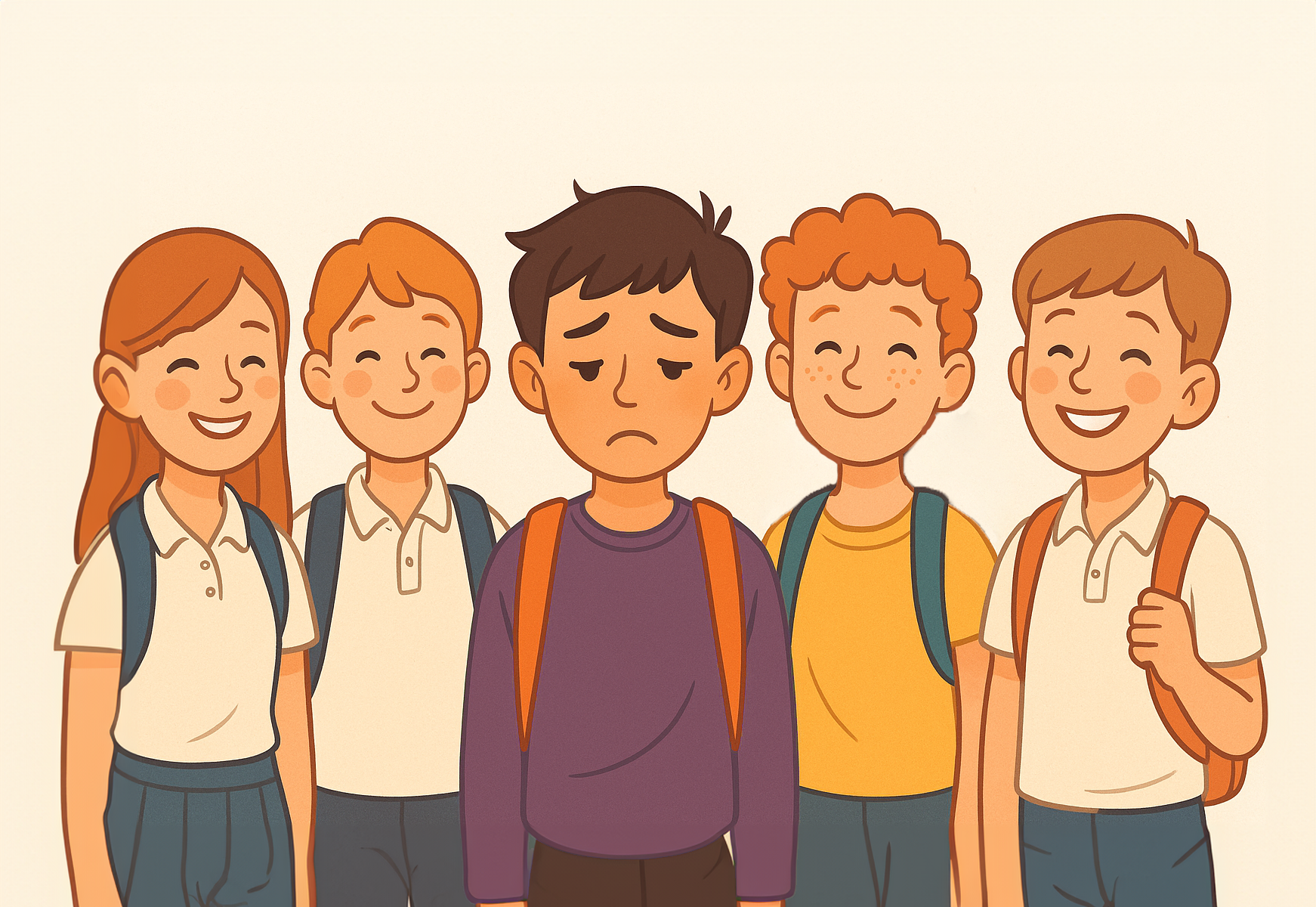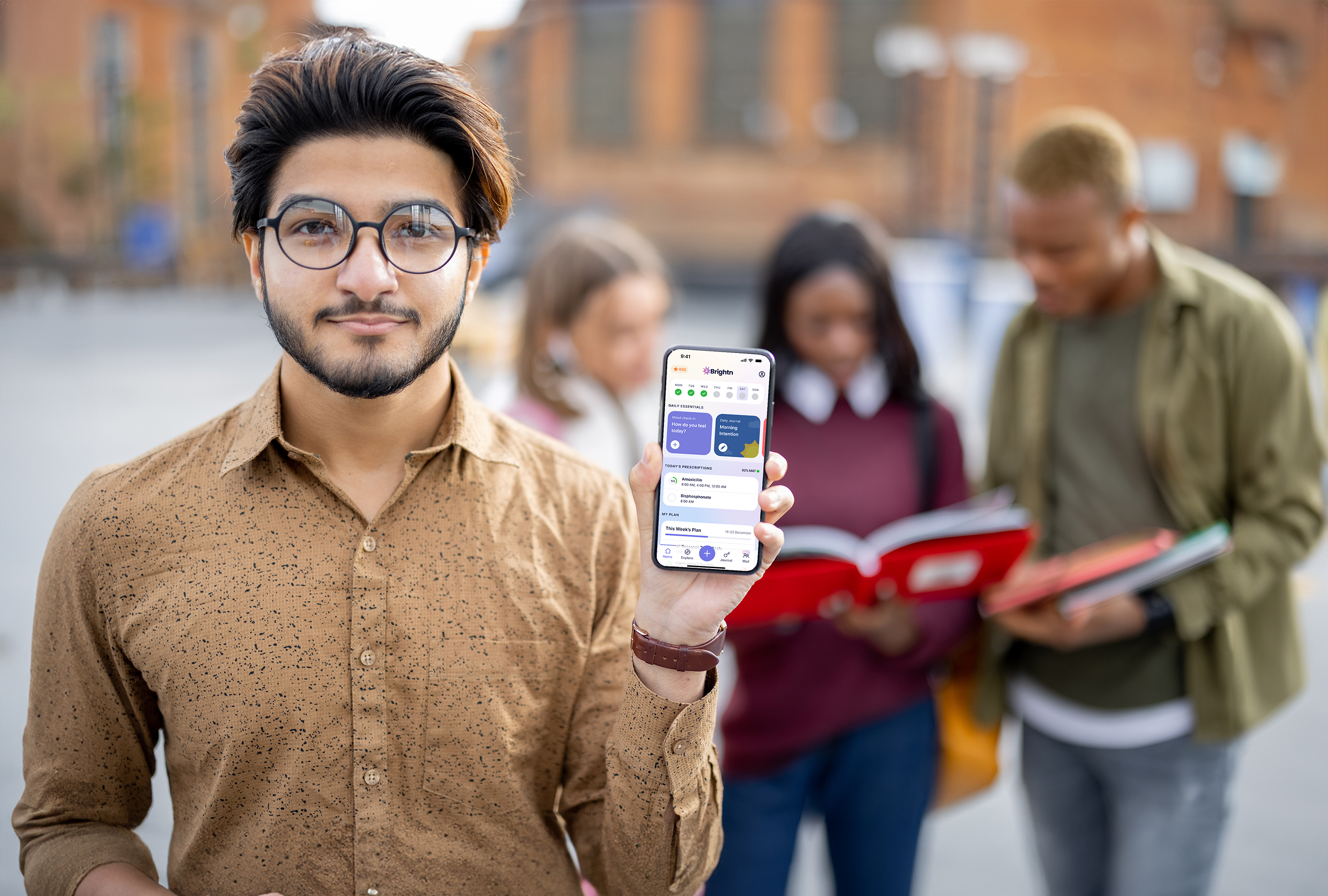
Emilie Mauricio
November 3, 2025
•
7 min read

The mental health crisis in schools isn't just a statistic—it's a daily reality affecting 1 in 5 students. While specific outcome data varies by implementation, research suggests that well-designed digital mental health platforms can significantly improve student engagement with wellness resources compared to traditional approaches alone.
With 47% of Gen Z feeling anxious and 22% experiencing frequent depression according to recent Gallup research, educators are discovering that the solution isn't more of the same—it's meeting students where they already are: on their devices.
Walk into any high school today and you'll see it: students hunched over phones during lunch, not because they're antisocial, but because they're seeking connection and coping mechanisms their school environment isn't providing.
The numbers tell a stark story:
But here's the hopeful twist: the same generation struggling with mental health is also the first to list mental wellness as their top New Year's resolution according to research published in The Independent. They're not just aware—they're actively seeking solutions.
Traditional counseling remains crucial, but let's face the math: many school counselors manage hundreds of students each. Even with the best intentions, providing meaningful one-on-one support at high ratios presents challenges. Meanwhile, students are dealing with:
The solution isn't hiring 10x more counselors (though we'd love that budget). It's leveraging technology to provide 24/7 support that complements human intervention.

Students can access support 24/7 without the social anxiety of walking into a counselor's office or explaining their absence to friends. This removes barriers that prevent many teens from seeking help.
Unlike one-size-fits-all programs, AI-driven platforms adapt to individual students' communication styles, interests, and challenges. Research analyzing 54 digital mental health interventions published in Telemedicine and e-Health found that personalization is the #1 driver of sustained engagement.
Digital platforms provide schools with valuable (and anonymous) insights about student mental health trends, helping administrators allocate resources more effectively and identify students who need additional support before they reach crisis points.
Technology enables proactive mental wellness support rather than reactive crisis intervention. Students can learn coping skills, emotional regulation, and self-awareness tools that may help them address challenges before they become overwhelming.
The most successful student mental health platforms incorporate these scientifically-proven engagement strategies:
🎯 Personalized Onboarding & Content Students respond best to platforms that adapt to their unique needs, interests, and challenges. Cookie-cutter approaches fail with a generation that expects customization in everything from playlists to news feeds.
🎮 Meaningful Gamification Not just points and badges, but achievement systems that reinforce actual mental health progress and personal growth milestones.
📊 Visual Progress Tracking Students need to see their growth. Mood trends, streak counters, and reflection insights keep them motivated long-term.
🤖 AI-Powered Conversations Advanced natural language processing that feels like texting with a knowledgeable friend, not filling out a clinical assessment.
📱 Mobile-First Design Seamless smartphone integration because that's where students live—spending 4+ hours daily according to Global Web Index research.

While traditional mental health support often focuses on emotional wellness alone, Brightn believes in exploring a more comprehensive approach that addresses three interconnected areas:
Sleep hygiene, stress management, mindfulness, and emotional regulation skills. Research consistently shows the connection between physical wellness and mental resilience. For practical strategies, check out our guide on The Power of Self-Care: Tips for Taking Care of Your Mental Health.
Here's what most schools miss: financial insecurity is the #1 stressor for older Gen Z students according to research in the Journal of Financial Therapy, yet it's rarely addressed in mental health conversations. Students heading to college or entering the workforce need basic financial literacy to reduce a major source of anxiety. Learn more about this connection in our article on Financial Wellness: How Money Stress Impacts Mental Health.
Helping students discover meaning and direction may be especially important since over half of young adults (58%) report experiencing little to no purpose in their lives according to UCLA's Center for the Developing Adolescent.
Brightn represents a new category in student mental health support—moving beyond traditional therapy models to give students proactive tools for thriving, not just surviving.
Advanced Personalization Engine:
Flexible Framework:
Beyond Points:
The Three-Pillar Approach: Unlike meditation-only apps, Brightn explores the interconnected nature of student wellness—including financial stress, academic pressure, and life purpose questions.
Evidence-Based Features: Every tool aligns with peer-reviewed research on digital mental health engagement. Learn more about our evidence-based approach and research foundation.

The mental health crisis in schools requires innovative solutions that meet students where they are. Traditional approaches remain important, but they're not sufficient for the scale and urgency of current needs.
Technology isn't replacing human connection—it's amplifying it. The best digital mental health platforms create bridges to deeper support, provide 24/7 coping resources, and help students develop lifelong wellness skills.
Students are already spending 4+ hours daily on their smartphones according to Global Web Index research. The question isn't whether they'll use technology for mental health support—it's whether schools will provide them with evidence-based tools or leave them to navigate TikTok therapy alone.
Ready to join the mental health revolution happening in schools across the country?
🚀 Download Brightn and start your mental health journey today.
Your students' mental wellness can't wait for next semester.

Brightn is the comprehensive mental wellness platform designed specifically for Gen Z, addressing the intersection of health, wealth, and purpose through AI-powered personalization and evidence-based engagement strategies.
🌐 Learn more at brightn.app
📚 Explore our research and resources
📱 Download for iOS and Android